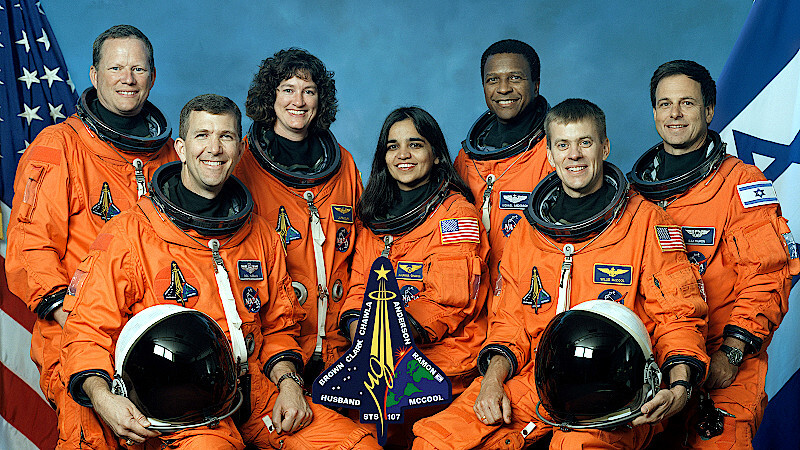Wednesday marks exactly 20 years since the National Aeronautics and Space Administration (NASA) experienced the third fatal tragedy in its lengthy history in the disintegration of the space shuttle Columbia.
The 22-year-old orbiter, which was the first of the program NASA launched into space in 1981, was in the process of reentry after a two-week solo mission when it broke up over northeast Texas on what was a clear day, killing crew members Rick Husband, William McCool, Laurel Clark, David Brown, Kalpana Chawla, Michael Anderson and Ilan Ramon.
“We will never forget,” the NASA History Office said in a tweet.
According to the NASA website, the ill-fated mission – STS-107 – was the first of six shuttle flights the federal agency had planned for 2003.
NASA said the astronauts exceeded scientists’ expectations when it came to the approximately 80 American and international experiments that were planned and carried out in a Spacehab Double Research Module in Columbia’s payload bay.
“These included nine commercial payloads involving 21 separate investigations, four payloads for the European Space Agency with 14 investigations, one investigation to mitigate risk for the International Space Station and 18 payloads supporting 23 investigations for NASA in the fields of physical and biological sciences,” the agency wrote.
Per a National Public Radio (NPR) report, Texans from the bustling Dallas-Fort Worth area to sleepy Lufkin recounted looking up at the cloudless sky to see streaks of smoke while others encountered pieces of the Columbia in yards and roadsides.
Pam Melroy, an astronaut herself, told NPR the Columbia flew at a speed that would've allowed it to land at Florida's Kennedy Space Center “within a second of when it's predicted,” but she and the others who gathered at the facility to meet the crew knew something was amiss when there was no sight of it.
“It was a moment where we all looked around and said, 'How could this be happening? The space shuttle isn't here,’” Melroy said in the article. "And that's when we realized it wasn't coming back."
CBS News reported that the Columbia Accident Investigation Board determined a hole in the orbiter’s leading edge created by a piece of external tank foam resulted in the failed, fatal reentry attempt and a nearly five-year pause on shuttle flights.
NASA was a few days removed from observing the 17th anniversary of the space shuttle Challenger disaster when a similar fate befell Columbia.
2011 marked the final year of the shuttle program, with Atlantis embarking on the last mission that summer.

